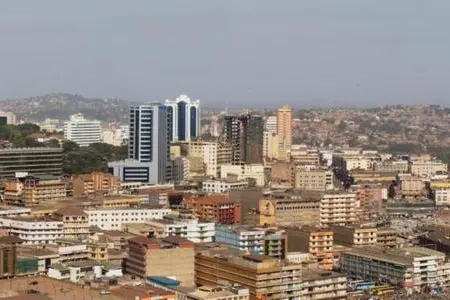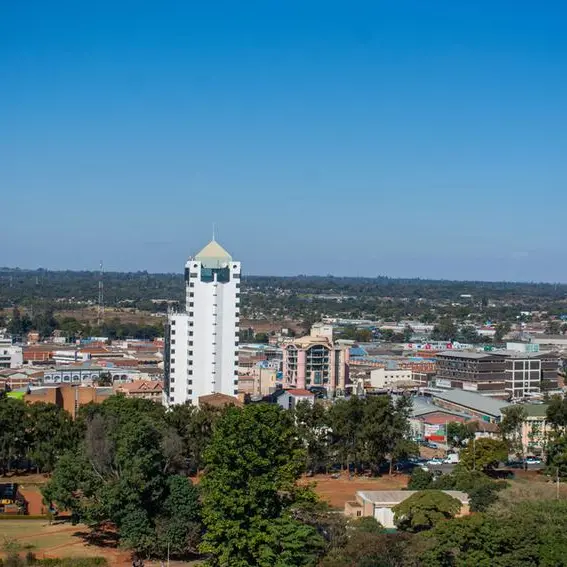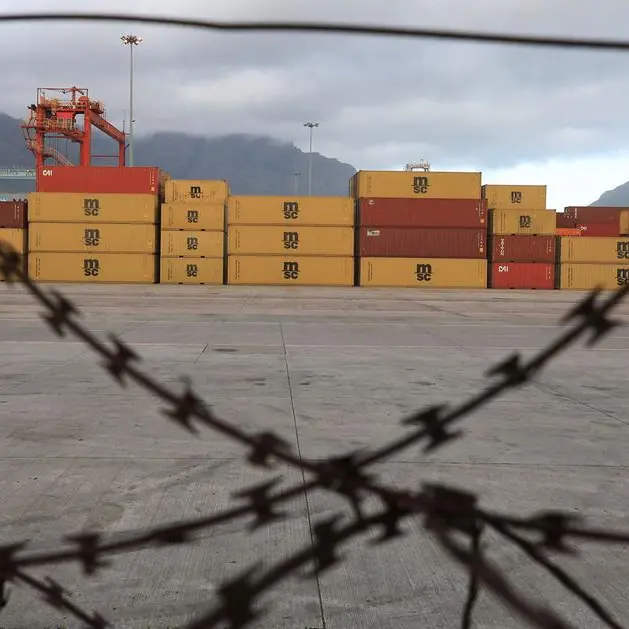PHOTO
In Isunga village, on the edge of Kibale National Park in western Uganda, brothers Nicholas Isingoma and Larry Mayombo stop a tricycle at two overgrown tea farms.
At 1,505 metres above sea level, Isunga in Kabarole district is perfect for tea growing. Yet the two farms separated by the Fort Portal-Kamwenge Road have been abandoned. The tea bushes, which used to be kept at three to five feet through regular pruning to ease plucking and encourage bud growth, have grown almost seven feet.
The brothers’ farms are part of hundreds of acres of tea estates in Uganda abandoned due to a sharp fall in prices of the green leaf.
When the farm-gate price of green tea leaves fell from Ush700 ($0.19) to Ush100 ($0.027) in the first six months of 2024, many farmers abandoned their crop.
Isingoma’s family could no longer afford to pay for pesticides, pickers and people to weed and prune the tea.
Plucking costs Ush130 (0.035) per kilo, transportation costs Ush170 ($0.046) per kg, so it made no sense for Isingoma to continue tending the bushes.“I have grown up in a tea estate,” he said, narrating fond memories of well-maintained farms when the prices were right.
The tea estate had been an attraction to visitors in the area.
The Chimpanzee Forest Lodge on the edge of the park, the former residence of their great-grandfather who was a district commissioner in the 1950s, remains a tourist facility, partly due to the tea plantation. Some of the tourists have been participating in community tea plucking.
In 2003, the family innovated and turned their grandfathers' residence into a guest house.
Their tea plantation, which was planted in 1966, was once the biggest employer in the area, hiring 15 to 20 pickers. With revenues from the sale of green tea leaves falling significantly, the family is struggling financially, to the extent that his brother Mayombo, a second-year student at Victoria University in Kampala, has had to drop out.
Read: Why Ugandan tea farmers are picking peanuts from toilMechanised harvestingThe same scenario is playing out in Sheema district, southwestern Uganda, home to another group of disgruntled tea farmers. At the Buzaare Tea Estate, located atop the scenic rolling hills, tea-harvesting machines have replaced human workers, a measure aimed at reducing labour costs.
At this altitude, tea pickers carrying open baskets on their backs held in place by straps across their foreheads use shears for harvesting “buds and the two young leaves”, which have the best flavour and aroma from every stem of the bush.
The farmers explain that picking tips helps the shoot to produce new lateral branches and leaves, resulting in a bushier and more compact growth pattern.
The farmer’s continued use of the scissor-like machine for harvest tea in the face of low farm-gate prices, which have impacted the quality of Uganda's exports, coupled with a small domestic market estimated at three percent, adds to the woes of the sector.
The use of shears, which even harvests coarser leaves and larger twigs, compromises the quality of tea exports compared to hand-picking, which allows for more selective plucking.
Apollo Buzaare Turyamusiima, chairman of the Uganda Tea Outgrowers Association (Utoa), is concerned about the low quality of green leaf supplied to processors, blaming it on gaping regulatory gaps in the tea industry.
To the farmers, the fond memories are gone: the once flourishing crop that fed, educated and paid their bills is no more. The families who have grown the crop for more than six decades face uncertainty, with no promise of things getting better.
Government subsidy?During a visit to southwestern Uganda last year, President Yoweri Museveni warned farmers against growing tea, citing the challenges of low returns from small-scale farming. He had been told of how farmers were abandoning their tea farms and homes, and, in some extreme cases, committing suicide after failing to service loans taken to invest in tea farming.
He told them that tea farming is only profitable on a large-scale, adding that crops such as tobacco, cotton, sugarcane, climbing beans and Irish potatoes cannot make farmers wealthy unless cultivated on a large-scale.
The low returns in the tea sector in Uganda, which have persisted for more than a year, have prompted government to rethink bailing out the struggling producers, especially the smallholder farmers who have been pushing for subsidised fertiliser costs of more than 50 percent.
The retail price of a 50kg bag of nitrogen, phosphorus, and potassium (NPK) fertiliser is Ush160,000 ($43.26). With a 50 percent subsidy, tea farmers say this would reduce the cost to Ush80,000 ($21.60)The farmers are betting on fertiliser application to increase productivity from the current 1,633kg per hectare per year to at least 2,500kg, against a potential above 3,000kg.
They also say that fertiliser application has the potential to improve the crush, tear, and curl (CTC) quality of black tea by producing blacker, higher density tea, which will be noticed by the market within three months of application.
However, the Permanent Secretary in the Ministry of Agriculture Animal Industry and Fisheries, Maj-Gen David Kasura-Kyomukama, has more questions than answers.“How do we bail them out? Because you bail them out when you have the money. How do you give them subsidies when you don’t have money?” he asked.
He said the country needs a policy on the tea sector to guide policymakers on what interventions are need.“Why would you subsidise a crop which is cheap [prices have remained low],” he added.
In November last year, while speaking to some of the tea farmers in Kigezi sub-region, a leading tea producing area, ICT minister Chris Baryomunsi asked tea farmers to remain patient, noting that the government recognises the severity of the situation.“I urge farmers not to uproot their tea because of the fallen prices,” Baryomunsi said, noting that the challenges affecting tea prices are both local and international, citing the Russia-Ukraine war, instability in foreign markets such as the Arab world, and local issues like tea quality as key contributors.“The plight of tea farmers has been discussed in the cabinet, which resolved to implement several measures, including supporting tea manufacturers and processors through the Ministry of Agriculture, transitioning factories into economic free zones, seeking alternative external markets for Ugandan tea, providing farmers with fertilisers to improve yields, establishing a tea marketing auction to enhance competitiveness,” he said.
Tea is Uganda’s third most important agricultural export after coffee and fish. Tea has earned Uganda an average of $76 million annually over the past eight years, peaking at $93 million in 2018.
More than 68 percent of Uganda’s tea acreage is owned by outgrowers. The country has 32 tea processing factories, five of which are owned by shareholder farmers.
The tea sector employs around 80,000 farming households and supports 150,000 skilled and unskilled workers, with about a million people relying on tea cultivation for their livelihoods.
© Copyright 2022 Nation Media Group. All Rights Reserved. Provided by SyndiGate Media Inc. (Syndigate.info).




















